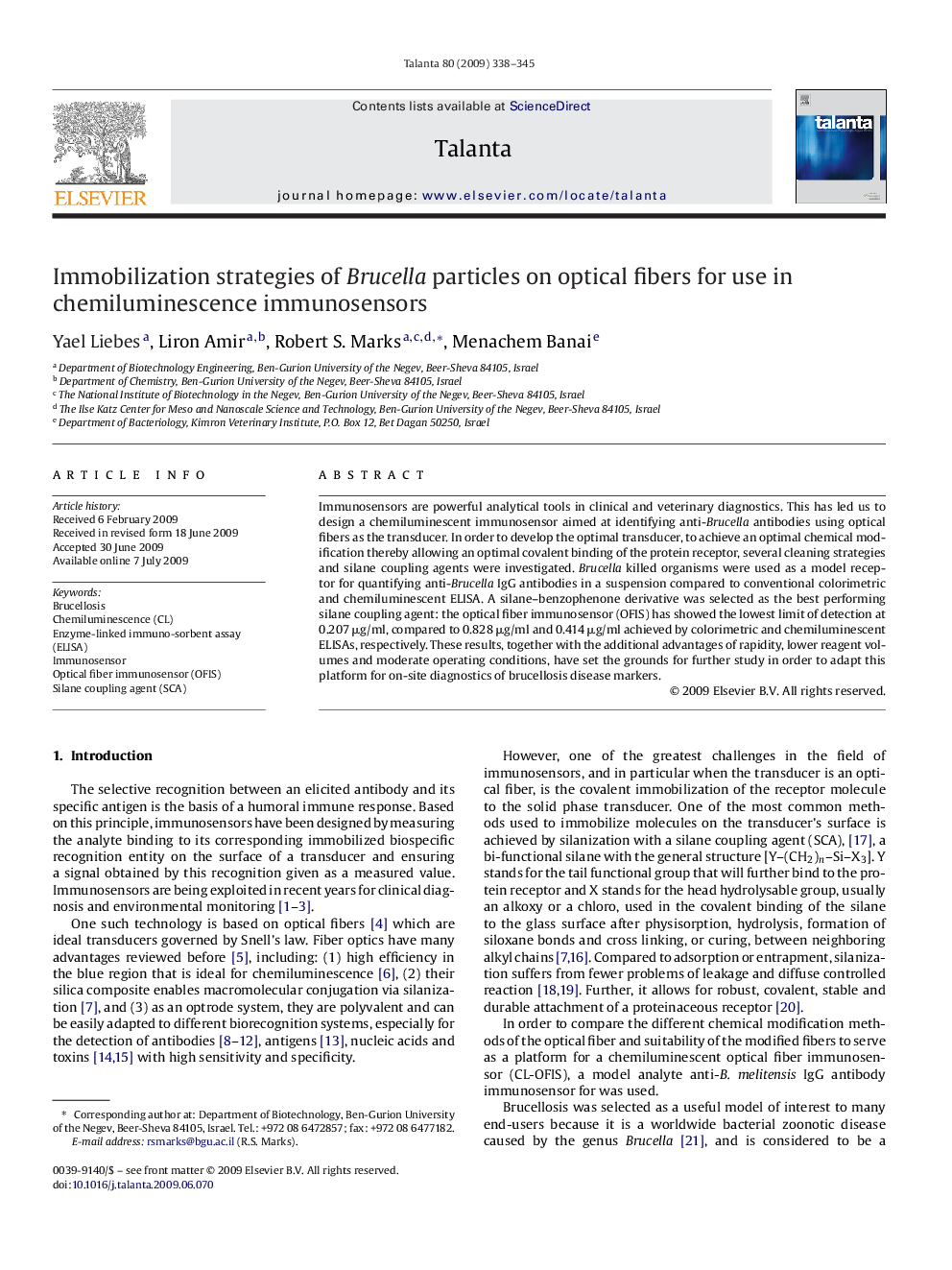| Article ID | Journal | Published Year | Pages | File Type |
|---|---|---|---|---|
| 1243686 | Talanta | 2009 | 8 Pages |
Immunosensors are powerful analytical tools in clinical and veterinary diagnostics. This has led us to design a chemiluminescent immunosensor aimed at identifying anti-Brucella antibodies using optical fibers as the transducer. In order to develop the optimal transducer, to achieve an optimal chemical modification thereby allowing an optimal covalent binding of the protein receptor, several cleaning strategies and silane coupling agents were investigated. Brucella killed organisms were used as a model receptor for quantifying anti-Brucella IgG antibodies in a suspension compared to conventional colorimetric and chemiluminescent ELISA. A silane–benzophenone derivative was selected as the best performing silane coupling agent: the optical fiber immunosensor (OFIS) has showed the lowest limit of detection at 0.207 μg/ml, compared to 0.828 μg/ml and 0.414 μg/ml achieved by colorimetric and chemiluminescent ELISAs, respectively. These results, together with the additional advantages of rapidity, lower reagent volumes and moderate operating conditions, have set the grounds for further study in order to adapt this platform for on-site diagnostics of brucellosis disease markers.
